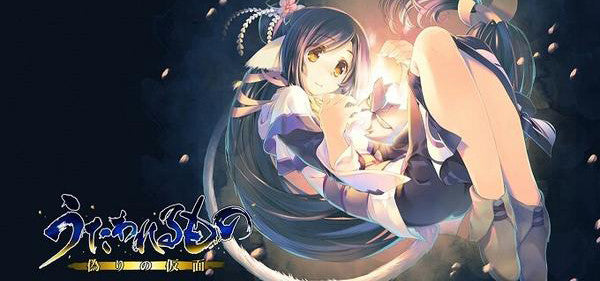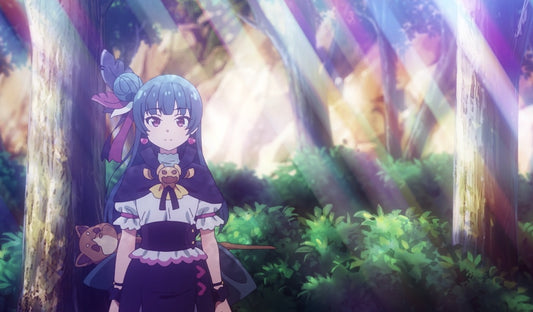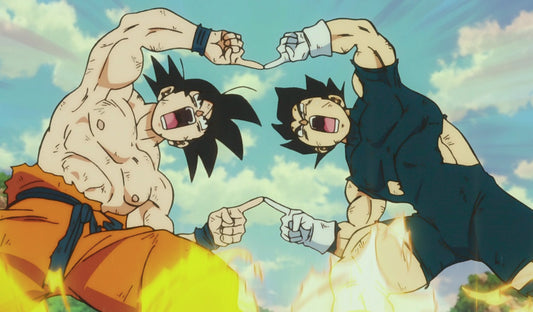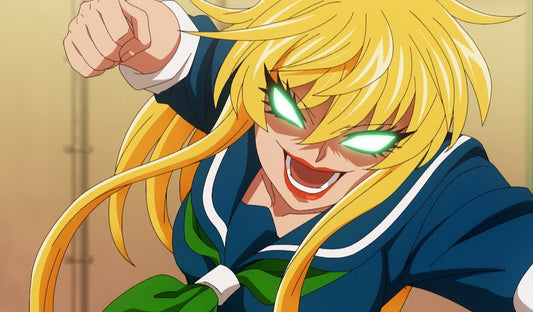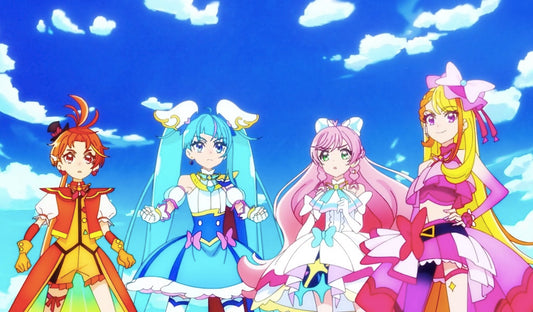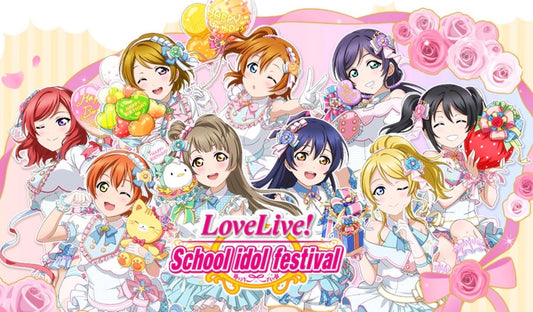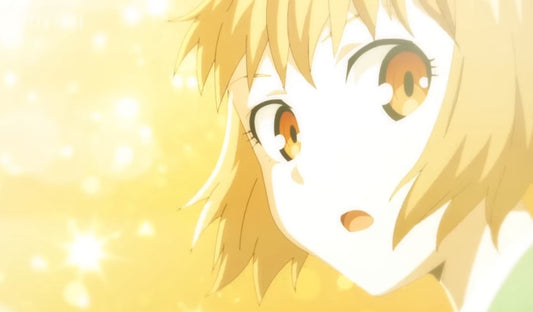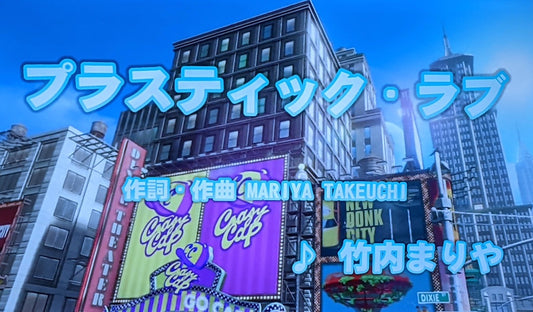
Utawarerumono: Itsuwari no Kamen (The False Faces) is a tactical role-playing visual novel game developed and published by Aquaplus. It’s available on PS3, PS4, and PS Vita in Japanese. No localization plans have been announced currently.
Itsuwari is the first part of a duology, with the sequel “Utawarerumono: Futari no Hakuoro” to be released on September 21, 2016. The duology is set several years after the event of the original Utawarerumono, which was a PC game released in 2002.
A 25-episode anime for Itsuwari was broadcasted from October 2015 to March 2016, with some striking changes from the game in terms of plot. This review will be based on the game only.
Story : 9/10
Itsuwari starts with an amnesiac man waking up in a snowy mountain and getting chased by a giant centipede monster known as a “Borogigiri”. A beautiful young girl by the name of Kuon comes to his rescue. Upon finding out that he has memories of the past, she names him “Haku” and decides to become his guardian and take him on her travels. The two eventually ends up in the capital city of Yamato, and gets employed by General Oshutoru to go on various missions.
This game is 80% visual novel and 20% tactical RPG, so most of the time spent playing this game is on reading or listening to what the characters say. It’s probably better for you to think of this as a visual novel with some gameplay elements as bonus.


The story progresses rather slowly, but there are plenty of character development. The characters are likable, and dialogues are humorous. Unlike most visual novels, Itsuwari’s main character Haku is fully voiced by voice actor Fujiwara Keiji who does a fantastic job portraying the lazy and unmotivated hero.
Once you get to know all the characters well enough, the plot moves on and there are many battles towards the end of the game. The game ends with a big cliff-hanger that will make you want to start on the sequel right away. Argh, the wait is torturous!

For fans of the series, Aruru and many others from the main cast from the first Utawarerumono return in Itsuwari. Even though they only make a short appearance in this game, they will once again return to the spotlight in Itsuwari’s sequel.
Gameplay: 8/10
Itsuwari features tactical RPG gameplay just like its predecessor. Each battle has a different victory and defeat conditions. Victory conditions are mostly “defeat all enemies” or “defeat a certain person”. Loss conditions are mostly “all party members defeated” or “a particular party member is defeated”. Very straightforward.

At the start of battles, there are a number of panels for you to set the starting position of party members. You can also equip items in this phase.
The most important element of the game is the “combo attacks”.

There are two types of combo attacker indicators. This is the overlapping circles type combo. To pull off combo attacks, players must press the circle button right at the moment a character lands a hit. There are timing indicators to guide players. This can take a long time to get used to, but is really fun once you get the hang of it. Some combos don’t have timing indicators, so those are very challenging to press correctly.

This is the hold-and-release type combo. To pull off combo attacks, players must hold the circle button and release the moment the indicator reaches full circle. This is really simple, as there is a rather big window for you to release the circle button.
When you manage to combo, two things will happen. First, an attack will do critical damage. Second, it will proceed to the next attack, and likewise you have to press circle in either of the two ways mentioned above. This repeats all the way until the final attack, which is a finishing move with a special animation. If you fail your presses, the combo attack will end without reaching the final attack and do much less damage.
There are six elements in the game; fire, water, wind, earth, light, and dark. The characters each belong to one of these six elements, with the exception of Haku, who is non-elemental. Each element is both strong and weak to one of the other element. If you attack and avoid enemies based on the elements, you will have a much easier time.
There are also different weathers in different stages which give a power boost to certain elements. "Mist" boosts water element, for example.
Winning battles will earn you items to equip. Items range from stat-boosting ones, to ailment resistant ones. Some items can greatly change the tide of a battle when equipped, so don't forget to equip them.
There is a “rewind” feature in battles that allows you to return to any turn of the battle, any time you want. This allows you to correct any mistake you make right after making them. Upon losing a battle, the game will prompt you to restart the battle or rewind to a previous turn. If your party is not severely under-leveled, simply rewinding should be enough to win you the battle if you take smarter actions the second time round. Rewinding also allows you to practice pressing combos as many times as you like.

The main story only has 17 battles, which is very few for a 60 hours long game… but fret not. After clearing the game, you can load the save data and have another 16 more optional battles. The final battle is the hardest battle in the game, where you get an exclusive fight with Munechika, an important ally who doesn’t appear in any of the main story battles.
At the start of the game, you have the option to play the game in normal or hard mode. You can change the difficulty any time during the game or choose to replay battles in either difficulty after finishing them the first time.
Music: 8/10
The Utawarerumono series is heavily based on the Ainu culture, from names, costumes, to music. Ainu are the indigenous people of Hokkaido and some parts of Russia, and their culture has become diluted ever since Japanese took Hokkaido from them.
I won’t pretend to know what Ainu-style music sounds like, since I have never heard any myself, so I can’t say whether the soundtrack features authentic Ainu instruments and style. I do love the soundtrack very much though. My favorite track is the title screen BGM, “Itsuwari no Kamen”, which is an instrumental version of the game’s theme song “Nuedori”.
You can listen to previews of the original soundtrack here ("Itsuwari no Kamen" is the first track). This soundtrack has BGM from both the game and anime.
Graphics: 7/10
Itsuwari doesn’t really shine in its 3D graphics department, being at best PS3-era. However, the CG stills are really beautiful, which matter more since most of the game is a visual novel. The illustrator is Mitsumi Misato, who is most well-known for ToHeart2, another game by Aquaplus. You can view some of her works at her website.

There are plenty of fan-service scenes, but still at an acceptable quantity that doesn’t hinder the story, unlike the anime. The anime sacrificed several important scenes for fan-service, presumably to please the anime-watching crowd.
Overall Score: 8.5/10
Itsuwari is a story-rich game with a unique world, well-developed and likable characters, wonderful voice cast, and plenty of humor. Battles are fun, but a little easy even on hard difficulty. Combos take a while to get used to, but are really fun to execute once you get used to it.
I absolutely love this game, but if there’s one thing I am dissatisfied with, it’s the story to battle ratio. I wish there are more main story battles, rather than half of the game’s battles being post-game optional content. I guess it can’t be helped as this half of the duology just doesn’t require many battles relevant to the plot. I expect the sequel to have many more battles. Just three more months now! The hype is real.
For those who can’t read Japanese, don’t give up hope. This game sold very well in Japan (more than 100,000 copies in one week), so someone’s bound to pick it up for localization in the future.
